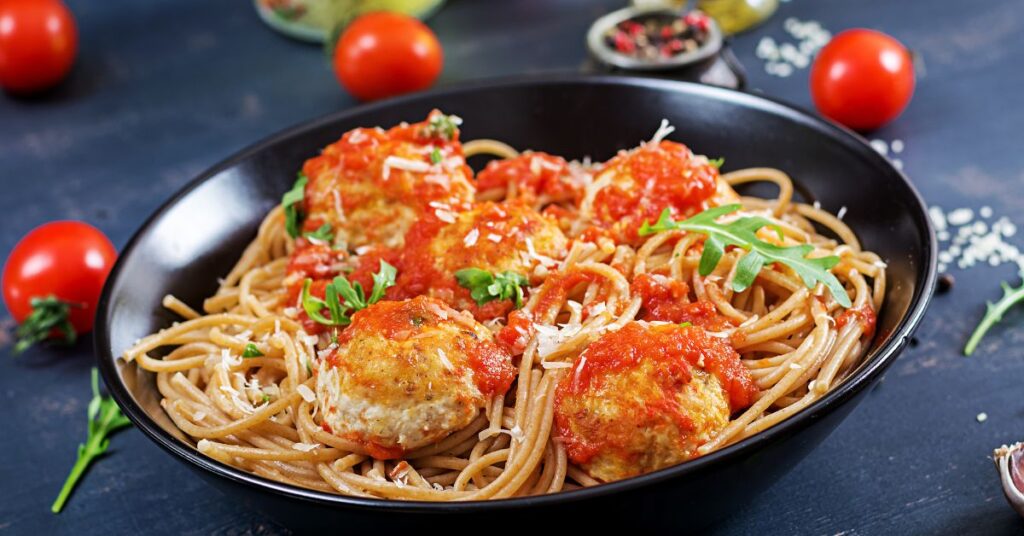Levapioli, a culinary gem from the heart of Mediterranean cuisine, has captured the hearts and palates of food enthusiasts around the world. With its rich flavors and aromatic spices, this dish tells a story that spans generations. From its humble beginnings rooted in tradition to the modern twists that chefs are embracing today, Levapioli is more than just food—it’s an experience steeped in culture and history. Join us as we explore the fascinating journey of Levapioli, uncovering what makes it such a beloved staple on tables everywhere!
A Brief History of Levapioli
Levapioli has roots that stretch back centuries. Originally, it hails from the diverse culinary traditions of the Balkans. Its name is derived from “levak,” a term associated with grilled meat.
Traditionally, Levapioli consisted of small, spiced sausages made primarily from beef or lamb. These were often chargrilled to perfection over open flames. The dish became a staple in homes and restaurants alike as communities gathered around meals.
The Ottoman Empire played a significant role in popularizing Levapioli across various regions. As trade routes expanded, recipes evolved with local ingredients and flavors incorporated into traditional preparations.
By the 20th century, Levapioli had established its presence not just in Balkan countries but also among immigrant communities worldwide. Today, this beloved dish continues to evoke nostalgia while inviting new flavor combinations inspired by global cuisine trends.
Traditional Levapioli Cuisine
Traditional Levapioli cuisine is a celebration of rich flavors and heartfelt traditions. At its core, it often features grilled meats, particularly skewers made from minced lamb or beef. These are seasoned with a blend of spices that elevate their natural taste.
Accompanying the meat are delightful sides like fresh flatbreads and tangy salads. The breads serve as perfect vessels for enjoying every bite of the savory skewers.
A staple in many households, Levapioli dishes bring families together around the table. Each recipe tells a story passed down through generations, reflecting local customs and communal gatherings.
The use of herbs like parsley and onion adds freshness while balancing the hearty feel of the meal. Cooking methods vary by region but always maintain an authentic essence rooted in tradition—creating unforgettable experiences with each feast shared among loved ones.
Modern Takes on Classic Levapioli Dishes
Modern chefs are reimagining traditional Levapioli dishes, infusing them with contemporary flair. This evolution is evident in the use of gourmet ingredients and innovative cooking techniques.
For instance, classic grilled meat skewers now feature unique marinades like pomegranate molasses or harissa. These additions bring depth and richness to the familiar flavors we love.
Vegetarian options are also gaining popularity. Dishes that once focused solely on meat now showcase roasted vegetables or plant-based proteins, appealing to a broader audience without sacrificing authenticity.
Presentation has transformed as well. Where Levapioli was traditionally served in simple platters, modern interpretations often highlight artful plating and vibrant garnishes that elevate the dining experience visually.
The essence of Levapioli remains intact while embracing culinary creativity. Chefs are proving that even cherished classics can adapt beautifully to meet contemporary tastes.
The Influence of Other Cultures on Levapioli Cuisine
Levapioli has always been a melting pot of flavors. Its roots trace back to various cultural exchanges that have shaped its unique identity over the centuries.
The Ottoman Empire played a significant role in introducing spices and cooking techniques. Ingredients like paprika, garlic, and cumin found their way into traditional recipes, enhancing the rich taste profile of Levapioli dishes.
Italian cuisine also left its mark. The use of tomato sauces and herbs added freshness to meat-based recipes. This blend created an exciting contrast with local culinary practices.
Moreover, Mediterranean influences introduced lighter elements such as fresh vegetables and olive oil. These ingredients brought balance to heartier dishes, making Levapioli more versatile.
Even modern food trends are reflected in Levapioli’s evolution. Chefs experiment with global flavors while honoring age-old traditions, creating innovative twists on classic meals that respect their origins yet excite diners today.
Popular Levapioli Ingredients and Spices
Levapioli thrives on a vibrant palette of ingredients and spices. The cornerstone is undoubtedly the high-quality meat, typically lamb or beef. This choice gives Levapioli its rich flavor profile.
Garlic is another essential element, providing depth and aroma that elevates each dish. Cumin and paprika often accompany it, adding warmth and complexity to the mix.
Fresh herbs like parsley or mint sprinkle brightness throughout traditional recipes. These greens not only enhance taste but also bring a refreshing contrast to hearty meats.
Olive oil plays a crucial role as well, enriching dishes while contributing healthy fats that make every bite satisfying.
Additionally, various regional spices may twist traditional flavors into something unexpected. Each ingredient tells part of Levapioli’s story, making it both familiar yet continually evolving in kitchens around the world.
Regional Variations in Levapioli Cooking
Levapioli is a dish that showcases the culinary diversity of various regions. Each area adds its own twist, influenced by local ingredients and traditions.
In the northern parts, you might find Levapioli seasoned with robust herbs like oregano and thyme. The emphasis here is on earthy flavors that pair well with hearty sides.
Travel southward, and you’ll discover a zestier version. Chili peppers often make an appearance, giving the meat a delightful kick. Here, fresh vegetables are just as essential to complement the spiciness.
Eastern variations lean towards smokier profiles. Grilling techniques bring out deep flavors in both meat and spices used in preparation.
On the western front, chefs experiment with marinades featuring citrus fruits or yogurt for tenderness. This method not only enhances flavor but also speaks to cultural influences from neighboring cuisines.
Each region’s take on Levapioli tells a story steeped in tradition and innovation.
Fusion Cuisine: Combining Traditional Levapioli with Global Flavors
Fusion cuisine has taken the culinary world by storm, and Levapioli is no exception. Chefs are experimenting with traditional recipes, blending them with global flavors to create exciting new dishes.
Imagine a classic Levapioli stuffed with spicy Thai basil and topped with tangy Sriracha. This unexpected twist brings a burst of flavor that challenges the palate in delightful ways.
Another popular fusion dish features Levapioli wrapped in seaweed and served as sushi rolls, combining Mediterranean essence with Japanese artistry. It’s all about creativity.
Some chefs are even incorporating Latin spices into their fillings, adding notes of cumin or chili for an extra kick. The result? A mouthwatering experience that pays homage to both cultures.
This innovative approach not only breathes new life into traditional Levapioli but also showcases the versatility of its core ingredients, inviting diners on a flavorful journey across continents.
Contemporary Dining Experiences in Levapi
The culinary landscape of Levapioli continues to evolve, creating an exciting fusion of tradition and modernity. Contemporary dining experiences in Levapi are a celebration of this rich heritage combined with innovative techniques and global influences.
Restaurants across the region have embraced the art of presenting levapioli in unique ways. Diners can find everything from gourmet street food stalls to upscale bistros that elevate traditional flavors into fine dining masterpieces. Chefs are experimenting with local ingredients, combining them with international spices and cooking styles, resulting in dishes that pay homage to history while looking forward.
Food festivals dedicated to levapioli often showcase these contemporary interpretations alongside classic recipes, offering patrons a chance to taste both worlds. Trendy eateries also focus on sustainability and farm-to-table practices, ensuring freshness while honoring age-old traditions.
Whether you’re savoring a spicy twist on traditional levapi or indulging in a fusion dish that blends cultural elements seamlessly, every meal is an invitation into the heart of Levapi’s culinary journey. As you explore this vibrant cuisine, you’ll discover how each bite tells a story—one that’s constantly being rewritten by passionate chefs committed to preserving yet innovating within the world of levapioli.






